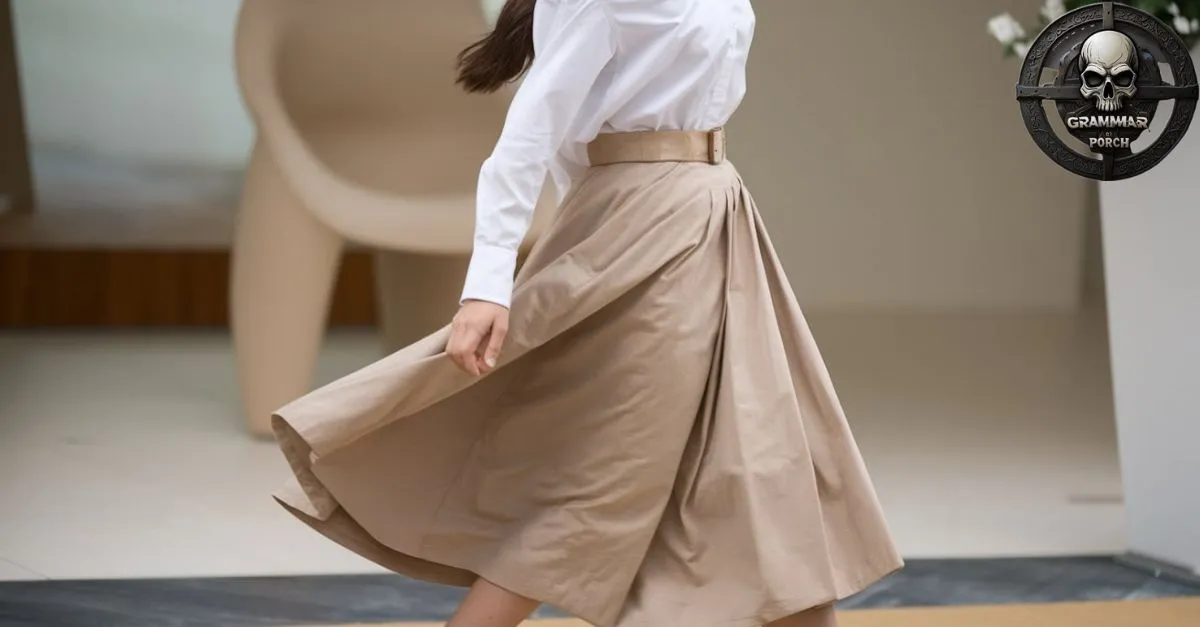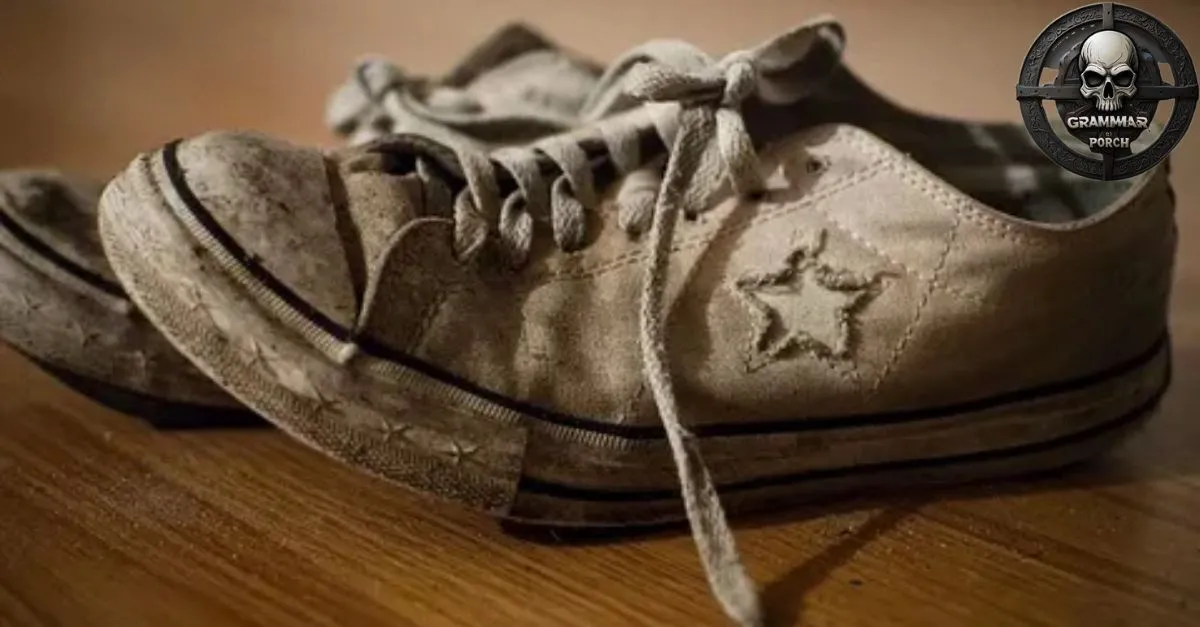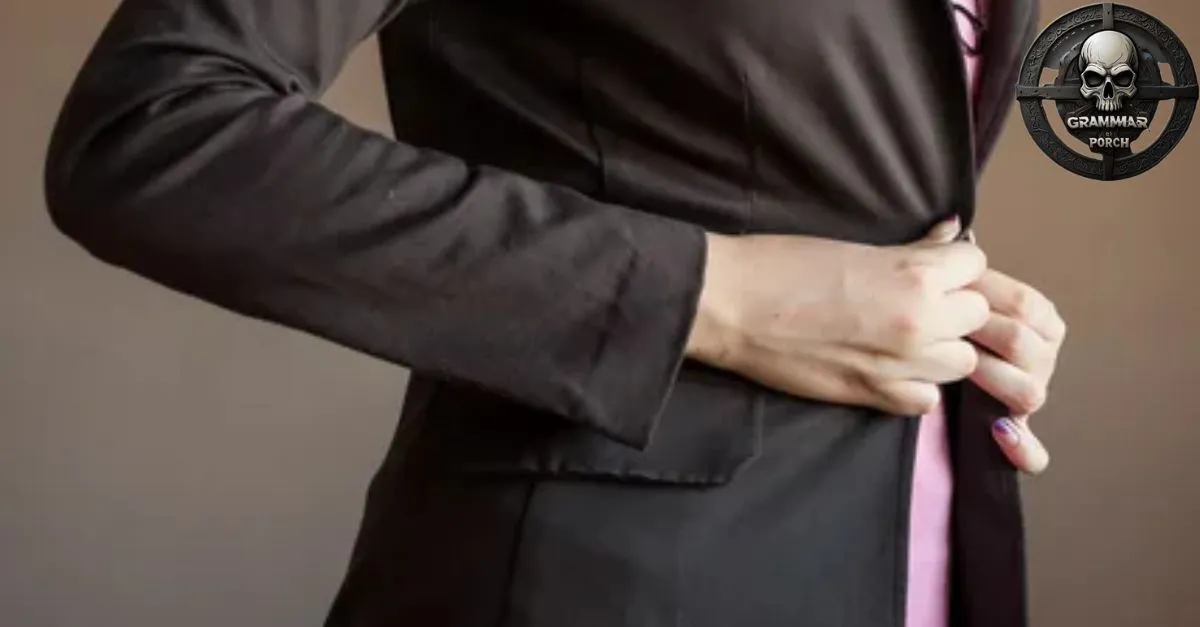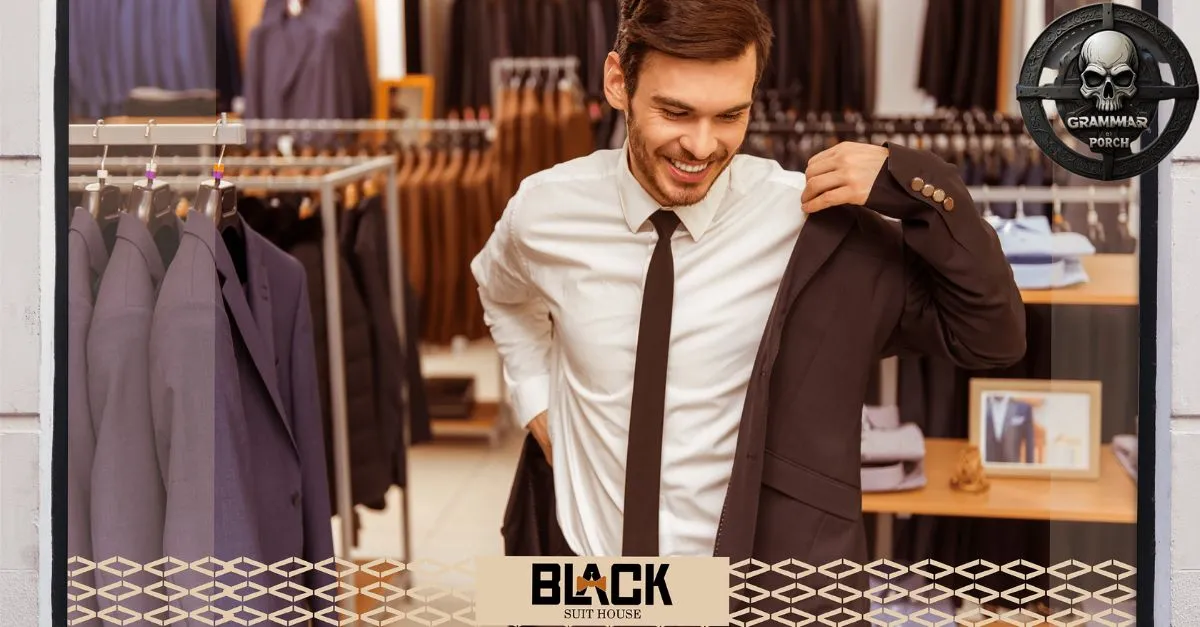Understanding verb conjugation in English can be challenging, especially when it comes to irregular verbs like “wear.” The past tense of wear often confuses learners because it doesn’t follow typical conjugation patterns. This article covers everything you need to know about the simple past tense and past participle of “wear.”
We’ll dive into definitions, meanings, and detailed conjugation charts to clarify how and when to use words like “wore” and “worn.” Plus, you’ll get plenty of examples and tips to help you avoid common errors with this irregular verb.
Is the Wear Word Correct?

Yes, “wear” is correct as the base form of the verb. It’s used in its simplest form when describing the action of putting on or having clothing or accessories on one’s body. This is the form of the verb that appears in dictionaries and is used in the present tense or with modal verbs like “can,” “will,” or “should.”
For example, you might say, “I wear glasses every day” or “They wear uniforms at school.” In both cases, “wear” indicates an ongoing or habitual action in the present. Additionally, “wear” is also used with auxiliary verbs like “do” in questions and negatives, such as “Do you wear a watch?” or “I don’t wear hats often.”
Since “wear” is an irregular verb, its past and participle forms change (to “wore” and “worn”), but “wear” itself is correct as the base or infinitive form.
Definition
“Wear” is an English verb that generally means to have something on your body, like clothing, shoes, or accessories. It can also refer to the process of something being gradually damaged or deteriorated, like when we say a road is “worn down” over time. So, the word “wear” can be applied to both personal and general actions.
Meaning
“Wear” is a versatile verb with multiple meanings depending on context. When used in terms of clothing, “wear” is the action of putting on clothes or accessories. For example, “I wear a coat in winter.”
But it also has a different meaning in expressions like “wearing down,” which implies gradual erosion or damage. This verb’s flexibility makes it useful but also a bit tricky to learn, especially in different tenses.
Understanding Past Tense of Wear vs Past Participle

In English, it’s crucial to understand the difference between the past tense and past participle forms of a verb, especially for irregular verbs like “wear.”
The past tense, “wore,” describes a completed action in the past, while the past participle, “worn,” is often used with auxiliary verbs in perfect tenses.
Past Tense
The simple past tense of “wear” is wore. This form is used when describing an action that happened at a specific time in the past.
For instance, “Yesterday, I wore my favorite jacket.” The past tense does not need auxiliary verbs like “have” or “has” to make sense. It stands alone to show that the action is completed.
Past Participle
The past participle form of wear is worn. Unlike the past tense, the past participle usually works with auxiliary verbs. You might say, “I have worn this coat for years,” using “have” to form the present perfect tense.
The past participle is essential in perfect tenses, where the action relates to both the past and present in some way.
What’s the Difference Between ‘Wore’ and ‘Worn’?
“Wore” and “worn” are forms of the verb “wear,” but each has a different role in English grammar. Understanding these differences helps in constructing sentences accurately.
Is the Wore Word Correct?

Yes, “wore” is the correct form for the simple past tense of the verb “wear.” It’s used when describing an action of wearing something that happened and was completed in the past. Unlike regular verbs that add “-ed” to form the past tense (like “walked” or “played”), “wear” is an irregular verb, so it changes to “wore” in the past tense.
For example, you might say, “Yesterday, I wore my favorite jacket,” or “She wore a dress to the party.” In both examples, “wore” indicates that the action of wearing happened at a specific time in the past and is now finished.
Definition
“Wore” is the simple past tense form of “wear.” This word signifies that the action of wearing happened in the past and is now finished.
Meaning
The term “wore” applies when describing actions completed in the past. For example, “She wore a red dress to the event.” It doesn’t need auxiliary verbs, making it a straightforward past action word.
Is the Worn Word Correct?

Yes, “worn” is also correct, but it is the past participle form of “wear,” not the simple past. “Worn” is mainly used in perfect tenses and with auxiliary verbs like “have,” “has,” or “had.” It’s appropriate in sentences that emphasize a completed action connected to another time or event.
For example, you might say, “I have worn this coat for years,” or “By the end of the season, they will have worn out their shoes.” In these cases, “worn” helps form tenses that relate past actions to present conditions or other past actions, providing a sense of completion or continuity over time.
Definition
“Worn” is the past participle form of “wear.” This word is essential for perfect tenses like the present perfect and past perfect, which express actions with connections to the present or past.
Meaning
“Worn” is commonly used with auxiliary verbs to indicate actions tied to another timeframe, like “I have worn these shoes many times.” It suggests continuity or emphasis on the experience rather than a single past event.
Forming the Past Tense of Wear

The past conjugation of wear is formed by changing “wear” to “wore” for the simple past. For the perfect forms or progressive tenses, additional auxiliary verbs like “have” or “was” are included with “worn” or “wearing.”
Examples
- “I wore that hat yesterday.”
- “They wore matching costumes last year.”
- “He has worn this coat every winter.”
- “She was wearing a scarf.”
How to Conjugate Wear
| Tense | Conjugation Example |
| Infinitive | to wear |
| Past Participle | worn |
| Present Participle | wearing |
| Present | I wear |
| Present Continuous | I am wearing |
| Present Perfect | I have worn |
| Present Perfect Continuous | I have been wearing |
| Past | I wore |
| Past Continuous | I was wearing |
| Past Perfect | I had worn |
| Past Perfect Continuous | I had been wearing |
| Future | I will wear |
| Future Continuous | I will be wearing |
| Future Perfect | I will have worn |
| Future Perfect Continuous | I will have been wearing |
Does The Verb Wear Conform To Regular or Irregular Conjugation?
“Wear” is an irregular verb because it does not follow the standard “-ed” rule to form its past tense. Regular verbs in English, like “walk,” form the past tense by adding “-ed” (walked).
However, irregular verbs like “wear” change form completely, making it “wore” in the past and “worn” as the past participle. Memorizing irregular forms, including perfect tenses and progressive tenses, is essential to using them accurately.
Other Verb Tenses of ‘Wear’ With Examples
In English, verbs change form to express various actions, times, or continuous events. Here’s a breakdown:
Perfect Tenses
- I have worn this jacket every winter for the past five years.
- She has worn the same necklace since her graduation.
- We have worn similar uniforms in previous competitions.
- They had worn the new uniforms before the big game started.
- You will have worn out those shoes by the end of the season.
- By next week, he will have worn his old coat one last time.
- They had worn matching outfits during every holiday season until last year.
- She has worn this dress for three consecutive weddings.
- I had worn the raincoat all morning before the sun came out.
- By the time we arrive, they will have worn their costumes for hours.
Progressive Tenses
- I am wearing a sweater today because it’s cold.
- She was wearing sunglasses when I saw her at the beach.
- They were wearing their uniforms proudly at the event.
- He is wearing a new suit for his job interview.
- We will be wearing costumes at the party tonight.
- They were wearing warm coats because of the chilly weather.
- You are wearing a bright color today—it looks great!
- I was wearing my lucky shirt during the game.
- She is wearing a scarf that her mother knitted for her.
- By this time tomorrow, we will be wearing our hiking gear.
Continuous Tenses
Continuous tenses show actions that are in progress. “Wear” becomes “wearing” in these forms, such as “I am wearing” (present continuous) or “I was wearing” (past continuous).
Verbal Forms of Wear
Verbal forms of “wear” include the infinitive “to wear,” the present participle “wearing,” and the past participle “worn.” These forms allow the verb to be used in perfect, continuous, and simple tenses, as in “I am wearing a jacket,” “I have worn these shoes,” or “She wore her favorite dress.”
Common Mistakes to Avoid
- Confusing “wore” and “worn.” Remember, “wore” is the past tense, and “worn” is the past participle.
- Using “worn” without an auxiliary verb in simple past tense situations. For example, “I worn” is incorrect; it should be “I wore.”
- Overusing “worn” in continuous or progressive forms.
Origins of Wear

“Wear” traces back to Old English “werian,” meaning to clothe or put on. Its evolution reflects different uses, from clothing oneself to the gradual erosion of objects, which is why “wear down” or “wear out” also make sense in English today.
Synonyms of Wear, wore and worn
Wear
- Put on
- Carry
- Sport
- Dress in
- Don
- Exhibit
- Model
- Display
- Present
- Endure
Wore (Simple Past)
- Put on
- Dressed
- Carried
- Sported
- Modeled
- Exhibited
- Displayed
- Flaunted
- Presented
- Brought
Worn (Past Participle)
- Used
- Aged
- Eroded
- Outworn
- Weathered
- Threadbare
- Battered
- Shabby
- Faded
- Ragged
Example Sentences Using ‘Wore’ and ‘Worn’

Wore (Simple Past)
- I wore my favorite boots to the concert.
- She wore a beautiful red dress at the wedding.
- They wore matching hats for the photo shoot.
- He wore a suit and tie for his big presentation.
- We wore sunscreen to protect ourselves at the beach.
- I wore a warm coat during the snowfall.
- They wore traditional costumes for the festival.
- She wore her glasses all day because she forgot her contacts.
- He wore his lucky cap to the game last night.
- The kids wore raincoats to stay dry in the rain.
Worn (Past Participle)
- I have worn these shoes for years, and they’re still comfortable.
- She has worn that jacket every winter since college.
- They have worn their uniforms with pride at every event.
- He has worn this same tie for all his interviews.
- We had worn similar shirts for the team photo.
- By the end of the day, they will have worn their outfits for hours.
- She had worn a scarf to stay warm during the trip.
- I have worn sunscreen every day to protect my skin.
- The children had worn Halloween costumes to school.
- They will have worn the traditional attire for the entire ceremony.
FAQs
What’s the past tense of wear?
It’s “wore.”
Is “worn” a past participle?
Yes, “worn” is the past participle.
Can I use “worn” alone in a sentence?
No, “worn” needs an auxiliary verb.
What is the present continuous of wear?
It’s “am wearing.”
What’s the future tense of wear?
The future tense is “will wear.”
Conclusion
Mastering the past tense of wear, as well as past participle forms like “worn,” requires understanding their unique roles. Practice using “wore” and “worn”
correctly, and review irregular verb conjugations regularly to improve your grammar skills. Conjugating “wear” accurately will make your English sound natural and fluent.

Larry is an experienced blogger with a passion for simplifying grammar. With years of expertise in writing and language, he shares insightful tips on punctuation, synonyms, and the intricacies of English grammar at **Grammar Porch**. His approachable style helps readers improve their writing skills with ease.

